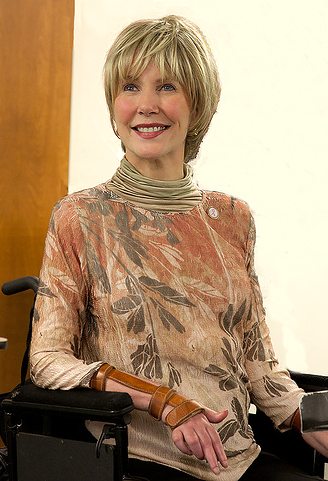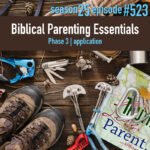[ad_1]
Joni Eareckson Tada on how to develop a ministry for kids with disabilities.
When a boy’s arms are paralyzed, how does he raise his hand in Sunday school? How does he manage eating lunch at a church picnic when he can’t hold his Kool-Aid or squirt mustard on his hot dog? Crowded Sunday school rooms and events are challenging enough for any child, but set that kid in a wheelchair, and even the ordinary challenges of a kids’ play seem insurmountable.
I thought of that recently when I sat behind Thad Mandsager at our church. At the age of 4, he sustained a spinal cord injury when he fell out of bed. It’s been hard for Thad, powering around his wheelchair using a chin control. But considering his age and severe disability, he is handling church picnics and kids’ plays like a trooper. He may not be able to raise his hand in Sunday school, but when he has a question, he grips his mouth stick between his teeth and raises it in the air—an unconventional but meaningful way of raising his hand. I couldn’t help but think of words like “perseverance,” “persistence,” “courage,” and “character” as I sat in church and watched Thad sing the opening hymn along with the rest of the congregation.
Jesus and Kids With Disabilities
A casual glance through the gospels will convince anyone how much Jesus loves children. When he said, “Suffer the little children to come unto me,” I’m certain he didn’t utter those words in a pious, standoffish way. Rather, I imagine him bouncing little boys on his knee, tousling girls’ hair, or kicking a ball with kids. I bet his heart ached when he saw a child abused, ignored, or neglected.
If this shows his compassion for strong and healthy boys and girls, oh, how his heart must’ve been moved when he saw a disabled child! Of course, we know that Jesus healed many children, but there were many more who never experienced freedom from being blind, deaf, epileptic, developmentally disabled, or paralyzed. Yes, Jesus loves the little children, but especially children who are gripped with a disability.
When we pray for a child with a disability, we wrestle not against the flesh and blood of cystic fibrosis or muscular dystrophy. We wrestle against powers and principalities who would relish nothing more than to keep that child in despair. That’s why, when it comes to reaching disabled children with the gospel, we must first pray for them with Christ’s perspective and heart of compassion. God will prepare the heart of the disabled child, much as he’s working in the heart of Thad Mandsager.
Understanding Needs
The disability creates the context for sharing the gospel. It’s impossible to declare Christ’s love to a disabled child without also addressing in some way the child’s physical needs.
“Perfect love casts out fear.”
Never is this advice truer than in reaching out to a child with a disability. Learn to look past a child’s physical appearance—the twisted smile and drool of a little boy with cerebral palsy or the bulky metal of the oversized wheelchair of a little girl with spina bifida. Look into their eyes and communicate the love of Christ with your smile. Kneel down to the child’s level. Use age-appropriate language, not “baby talk.” Talk to the child about subjects other than the disabling condition—ask about hobbies, pets, vacation memories, and school. At some point, later on, you’ll have paved the way to ask a sensitive question such as, “Thad, can you tell me what it feels like in your wheelchair? What are some of the neat things about being in your chair?”
Use appropriate terminology.
Avoid words such as physically challenged, differently abled, or motion-impaired. Such trendy labels can communicate a sterile attitude that avoids the obvious realities of a physical disability. You’re safe when you say, “a child with a disability” or “a little girl with a handicapping condition.”
Develop ministries to families.
Most families struggle with financial strain, social isolation, lack of information, and the burden of the day-to-day routine. When I talk to mothers who have a child with a disability, I most often hear, “I am so tired.” Think of ways you can help. Offer to learn the child’s routine so you or a church member can babysit. Run errands or pick up groceries. Such compassionate actions will win you the right to enter a deeper level of friendship with the disabled child.
Make church accessible.
Access is the key word-not only in the rooms and worship center, but also in programs and fellowship activities. If a child is in a wheelchair, a ramp may need to be hammered together out of plywood. Or suggest that your church pour a permanent concrete ramp that will say to all disabled people, “You are welcomed here.”
Assign helpers to children.
If a child is learning disabled, autistic, or mentally disabled, your church programs can be made more accessible if he is assigned a helper—a secure and sensitive peer who can assist with navigating the church campus, turning pages, writing, cutting, or pasting Sunday school materials. Train peers in how to help a disabled friend. Once children complete the training, they receive a special license to help out.
Request information.
If a disabled child is starting Sunday school, get all the pertinent information or health care concerns from the parents and then alert teachers. Arrange an informal meeting between you, the parent, and the child’s Sunday school teacher to discuss potential problem areas and explore solutions. Keep the communication open, honest, and yet sensitive to parents and Sunday school teachers. This is one way to build a relationship with the child and the parent.
Group’s book on Special Needs Ministry for Children is also a practical, insightful ministry training book packed with case studies and personal stories from recognized experts in this ministry field.
Declaring and Demonstrating the Gospel
Thankfully, Thad Mandsager is involved. As he approaches his teenage years, he helps teach vacation Bible school, leads Toddler Praise, and occasionally helps take the offering by placing the basket on his lap as he moves from aisle to aisle. Our church understands that to “give” the gospel to someone like Thad involves more than just praying and speaking. It must mean involvement.
The result? Hope! As well as peace and purpose. It excites a child to think about the day when “the eyes of the blind will be opened, the ears of the deaf unstopped, the tongues of those who cannot speak will shout for joy, and the lame shall leap like deer.” Aside from cures here on earth, only in Christ are such hopes realistic.
Yes, you have a lot to share with children who have a disability—little boys who are blind can see the Light, girls who are deaf can hear the Word of God, little ones in wheelchairs can walk with Jesus, and even children with Down syndrome can have the mind of Christ.
 Joni Eareckson Tada is founder and CEO of JAF Ministries, an organization that accelerates Christian outreach in the disability community.
Joni Eareckson Tada is founder and CEO of JAF Ministries, an organization that accelerates Christian outreach in the disability community.
For more quick tips on reaching children with special needs, check out Children’s Ministry Pocket Guide to Special Needs. In this little book, you’ll find ways to reach every child as you share Jesus’ unconditional love. And for more articles, check out these posts!
© Group Publishing, Inc. All rights reserved. No unauthorized use or duplication permitted.
[ad_2]
Source link







You must be logged in to post a comment.